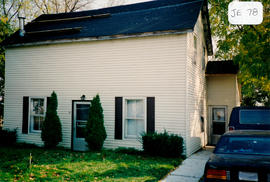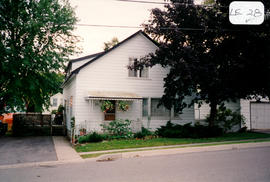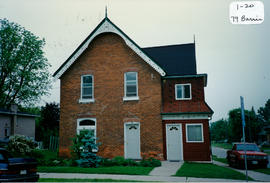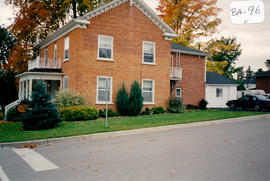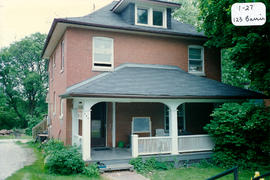- CA BWGPL GJ-HB-2017-04-04-02
- Item
- 1995
Part of George Jackson fonds
The mid-block building located on the north side at 15 John Street East was built around 1890 in the Eclectic Neoclassical style. It was the home of Miss Arnold, a well-respected member of the community, during WWI. Dick Saint had part of the house before and during WWII. The building is currently (in 2014) owned by Giuseppe (Joe) Campagnola. It has been his family’s home since the mid 1950’s.
The two-storey, rectangular building has symmetrical openings and a centre hall plan. A medium-pitched, hip roof with a curbed deck above is a Regency Revival feature. It is reminiscent of construction before a belvedere or cupola is added and it accentuates the horizontal roof-line. The upper-floor windows are narrower than the lower ones (neoclassical features). This suggests late nineteenth-century construction. The full-width, front verandah is another Regency Revival feature. Elaborately-carved, wood brackets and turned wood posts at the verandah are original. The typical low porch railing and wood newels at the stair railing are more Gothic Revival features. This building has rusticated, loadbearing, cement-block construction and a cement-block foundation. These blocks were made by William Turner during WWI. The block pattern is considered to be interesting. According to the 2000 inventory, this unique house has been well-maintained and many original features remain. It also notes that the ground-floor replacement windows with sliders, screen door, and window A/C unit are unsympathetic with the original design. (1, 2, 3)
George Jackson


